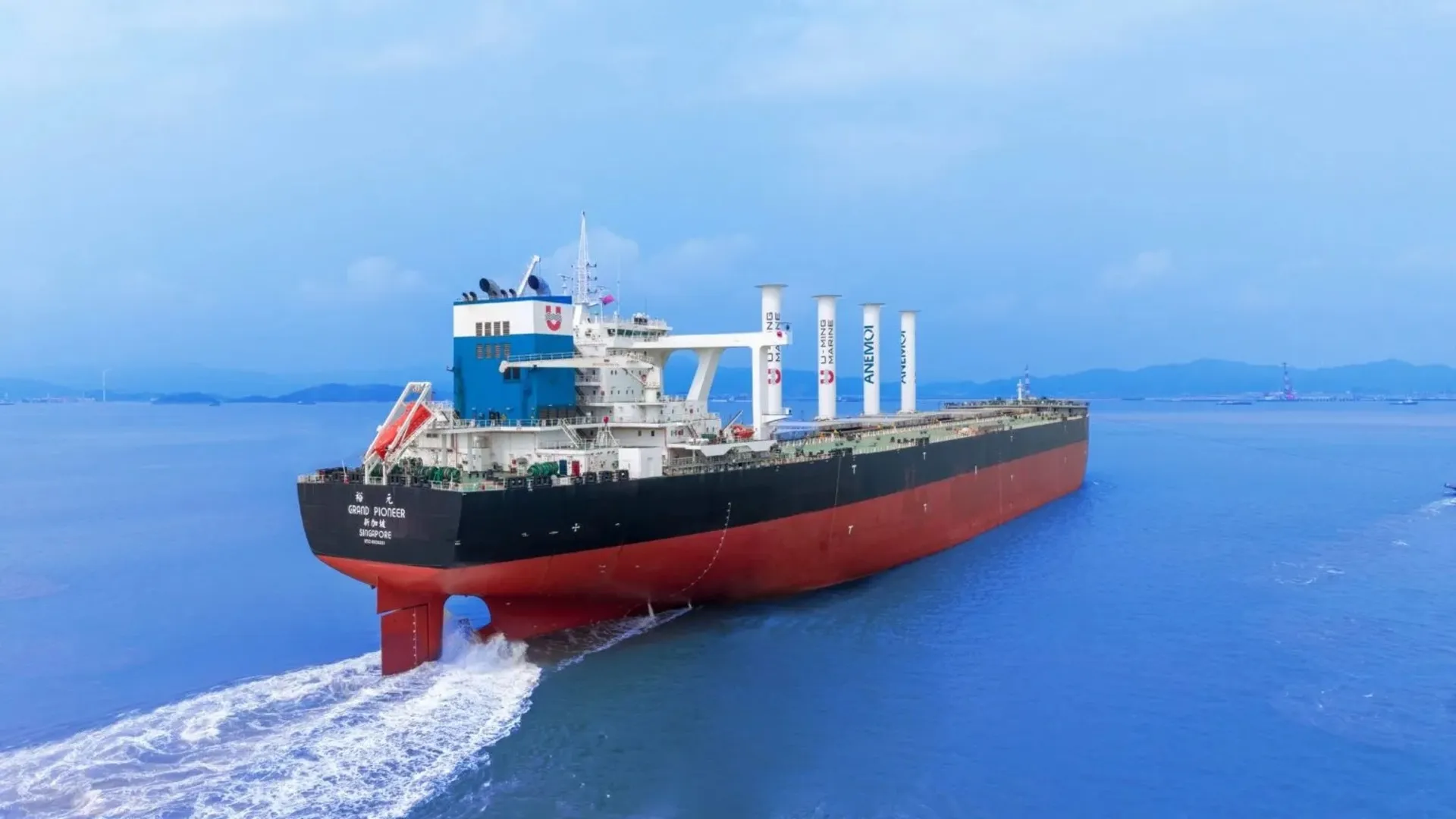
A UK wind propulsion developer has successfully installed four massive wind sails on a 325,000 deadweight-ton bulk cargo carrier in a bid to cut fuel consumption and reduce emissions on long-haul trade routes.
London-based Anemoi Marine Technologies Ltd. and U-Ming Marine Transport Corporation, a shipping company that builds liquefied natural gas (LNG) dual-fuel bulk carriers in Taiwan, recently announced the completion of the installation.
The project reportedly took place at the COSCO Zhoushan shipyard in China’s Putuo District, on Grand Pioneer, a 325,000 deadweight-ton very large ore carrier (VLOC) operated by the Taiwanese company.
“The installation of Rotor Sails on Grand Pioneer marks an important step in U-Ming’s decarbonization journey and reflects our belief that the future of global shipping must be both sustainable and competitive,” Jeff Hsu, U-Ming’s vice chairman, revealed.
Giant sails to cut emissions
The four rotor sails, each standing 114 feet (35 meters) tall with a diameter of 16 feet (five meters), were supplied by Anemoi. They were delivered fully assembled and dynamically balanced from the company’s production base on the Yangtze River.
Anemoi revealed that the sails were transported by barge and lifted directly onto the deck. They were secured in less than two days, using the company’s plug-and-play installation method. An additional five days were needed for testing and commissioning.
In general, rotor sails utilize a physical phenomenon called the Magnus effect to generate thrust for ships by creating a pressure difference as they spin in the wind. When wind hits a spinning rotor, the air accelerates on the side rotating with the wind, creating a low-pressure zone.
This reduces reliance on conventional fuel oil, leading to lower operating costs and emissions. The technology is expected to deliver annual fuel savings of up to 12 percent on the Grand Pioneer during deep-sea operations between Brazil and China.
Harnessing the wind
The installation process was supervised by Anemoi’s specialist team. The experts also accompanied the vessel on its maiden voyage from Zhoushan to Singapore to oversee training and operational handover.
This ensured the ship’s crew was fully equipped to manage the system. The sails also feature a folding design, which allows them to tilt when necessary for port operations or passing under bridges. This adds further operational flexibility.
“Through the collaboration with our forward-thinking partner Anemoi, we are turning strategy into action by reducing emissions, enhancing efficiency, and delivering long-term value,” Hsu elaborated. He added that the initiative shows the firm’s role in supporting the industry’s shared ambition of achieving net zero by 2025.
“We are proud to have delivered another successful Rotor Sail installation, providing fully assembled technology that minimizes time in the yard and maximizes value for our customers,” Clare Urmston, Anemoi’s CEO, stated.
U-Ming is the first Taiwanese shipowner to deploy rotor sails. The Grand Pioneer is projected to achieve annual fuel and emissions reductions of between 10 and 12 percent on average. It will now resume deep-sea service between Brazil and China under a long-term charter with Brazilian mining company Vale.



